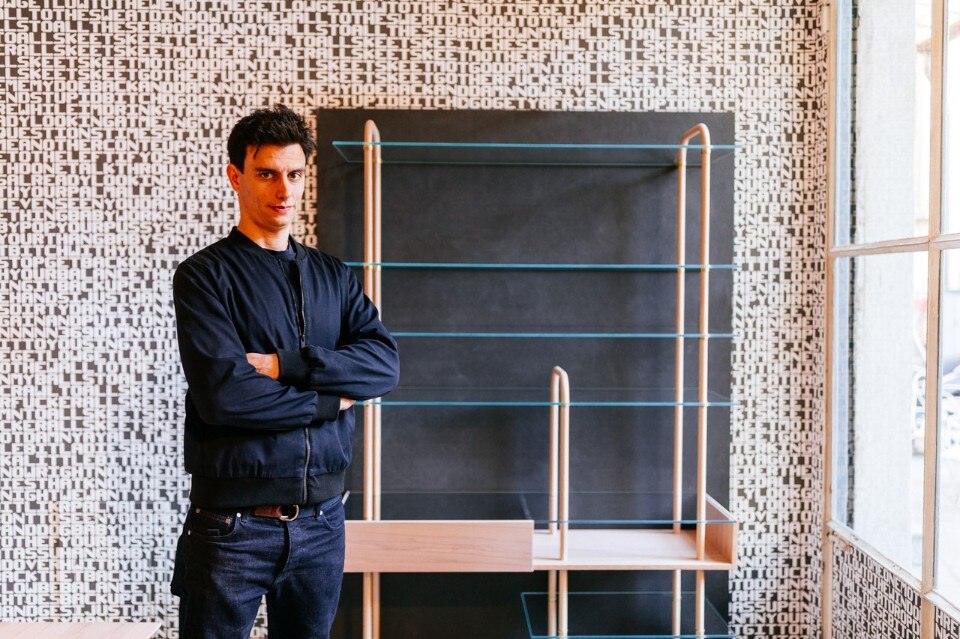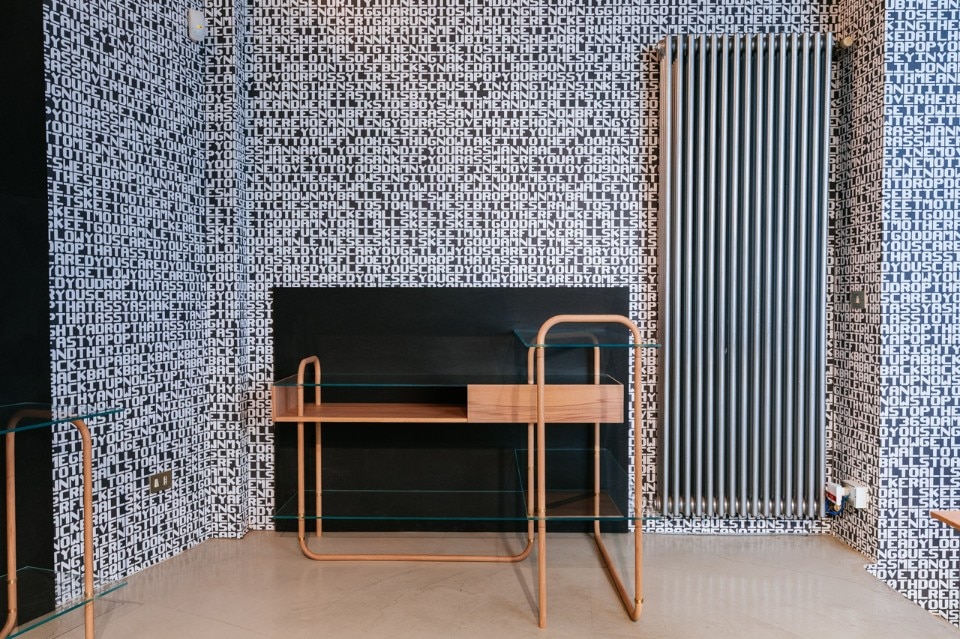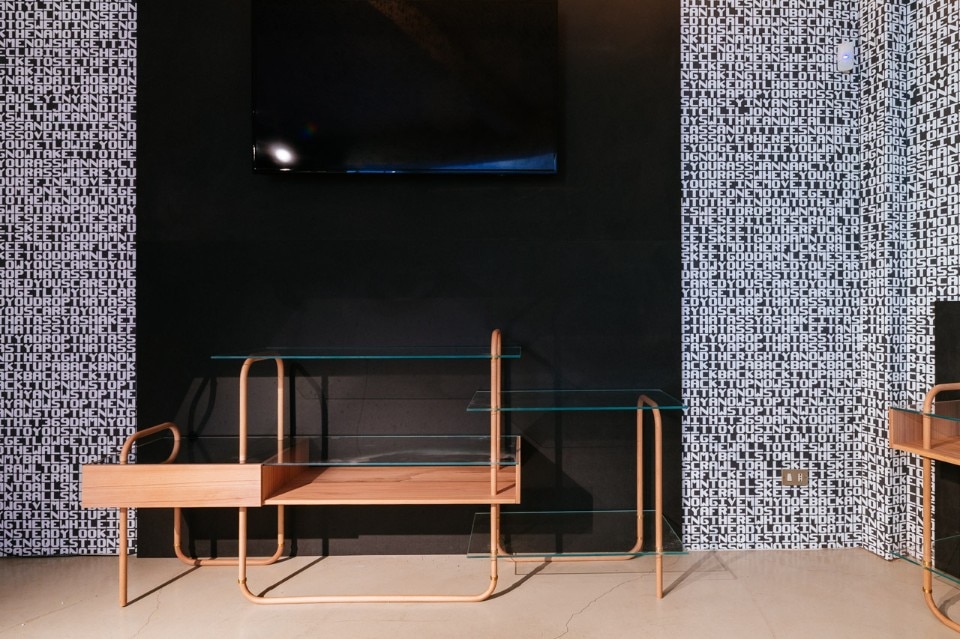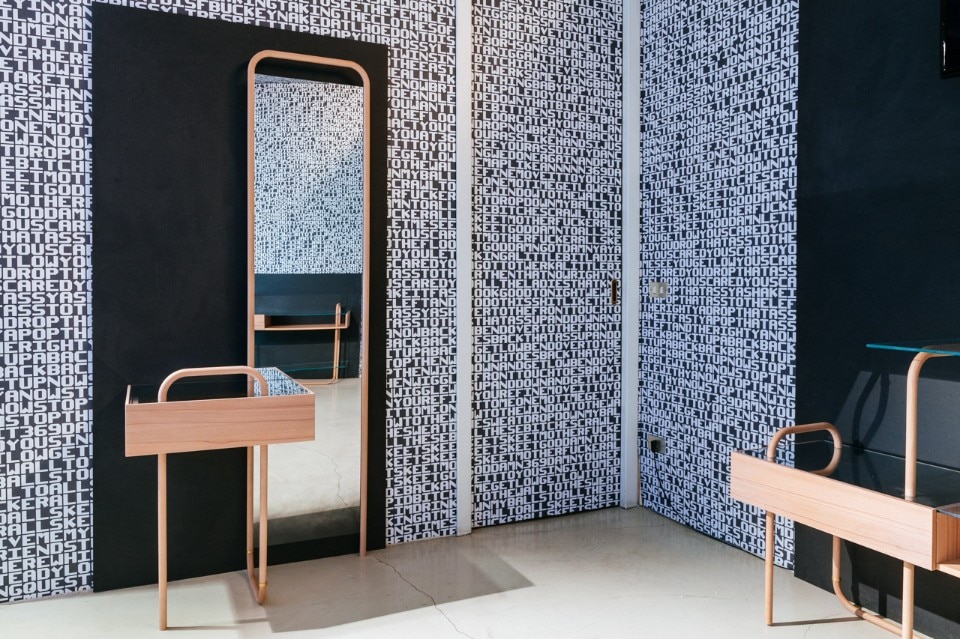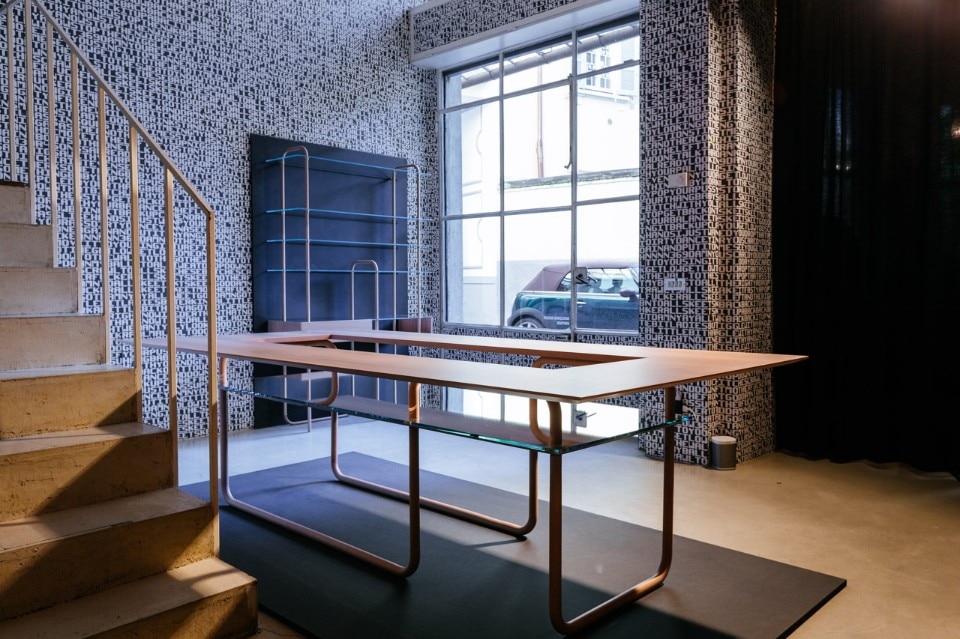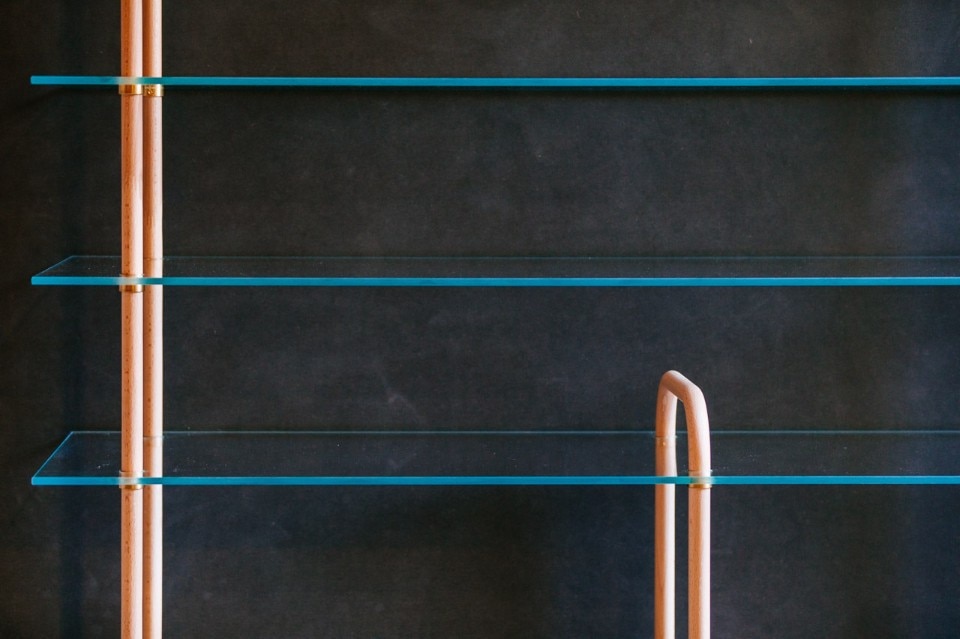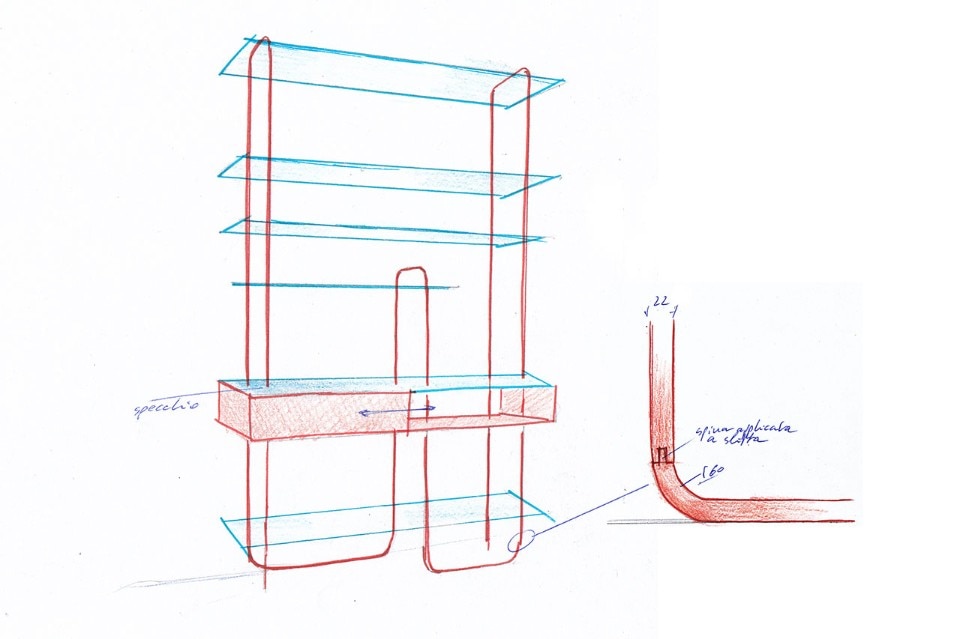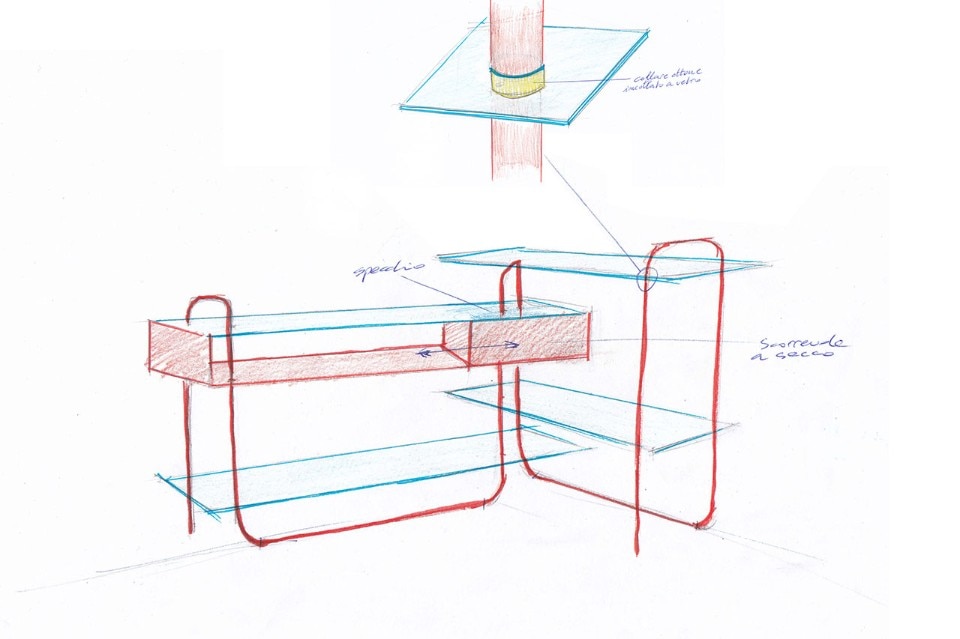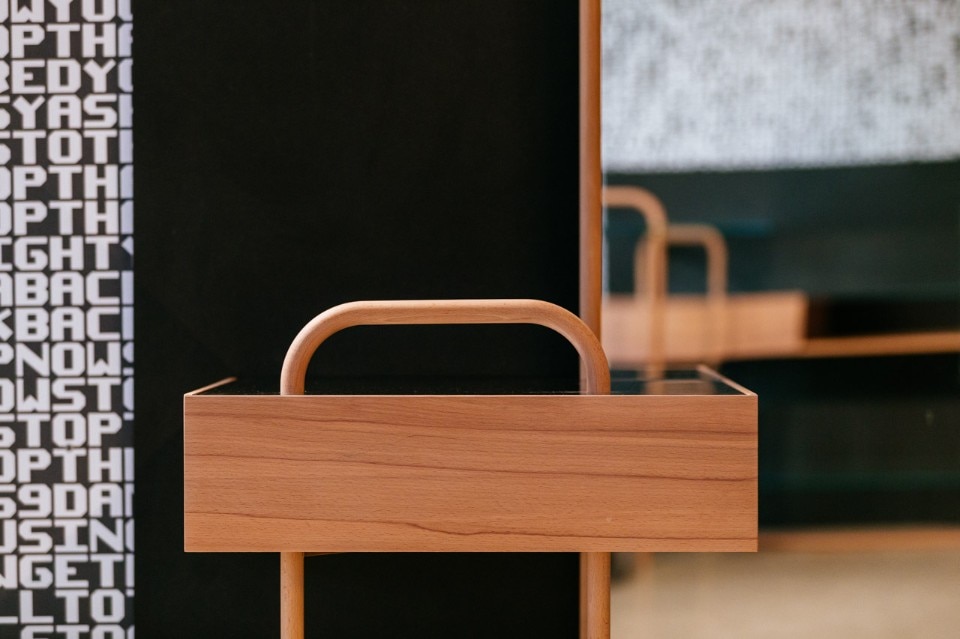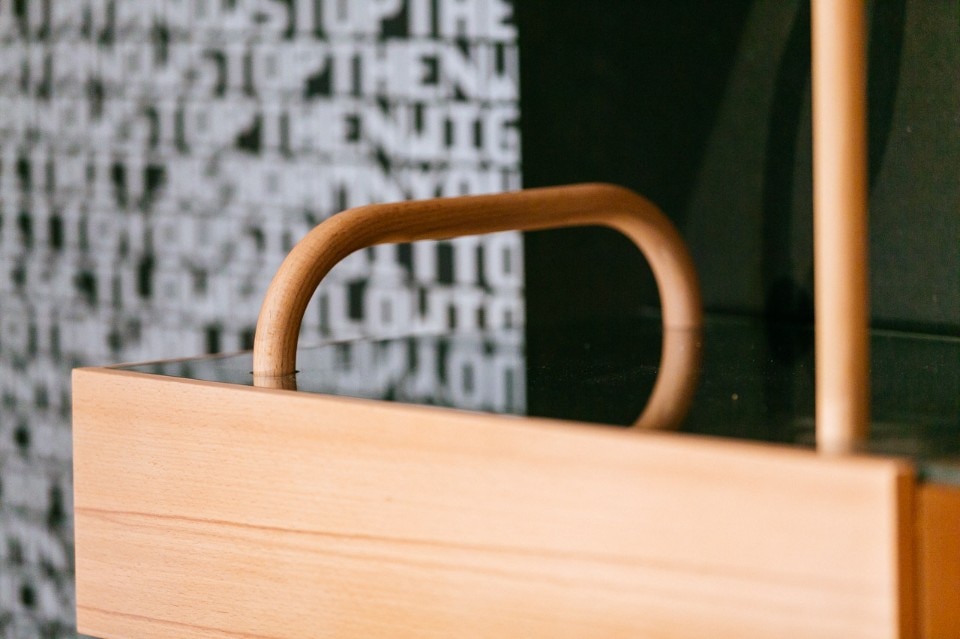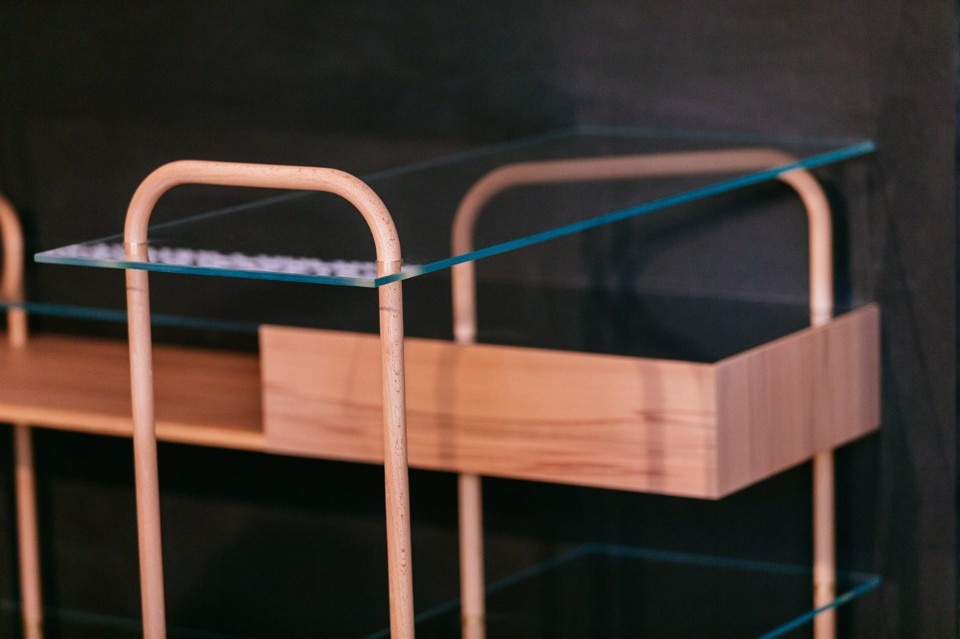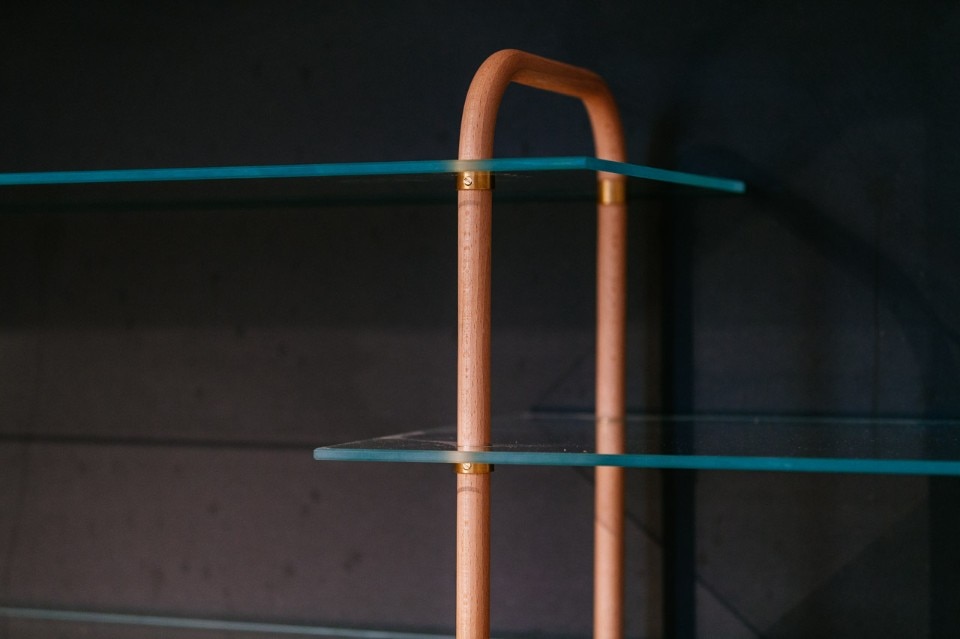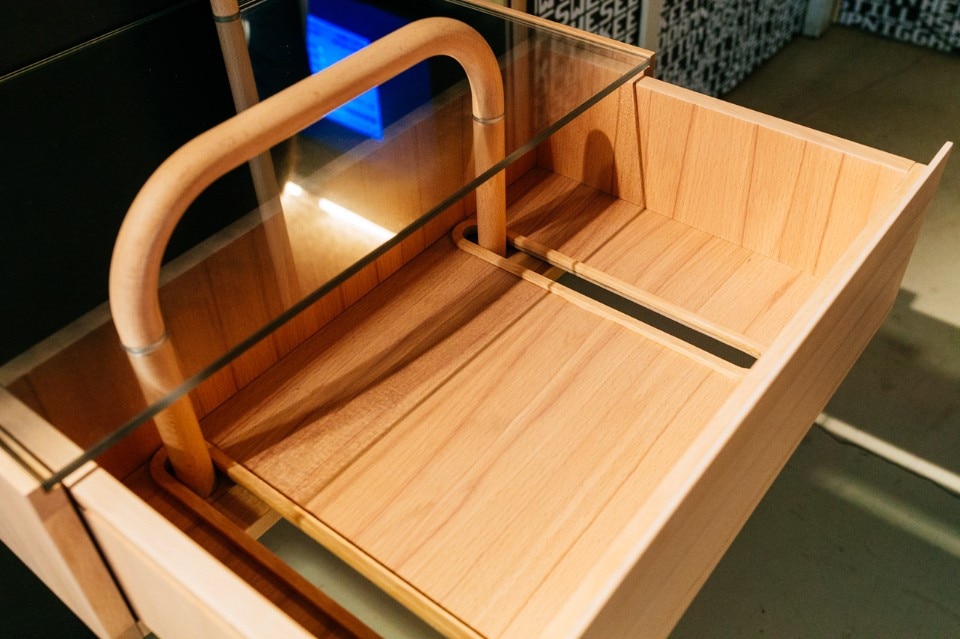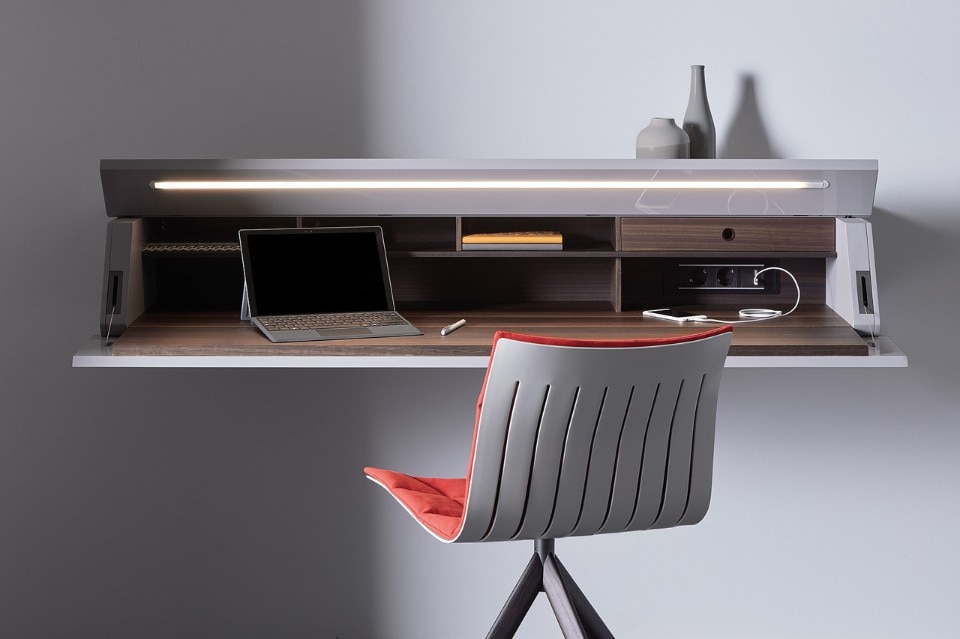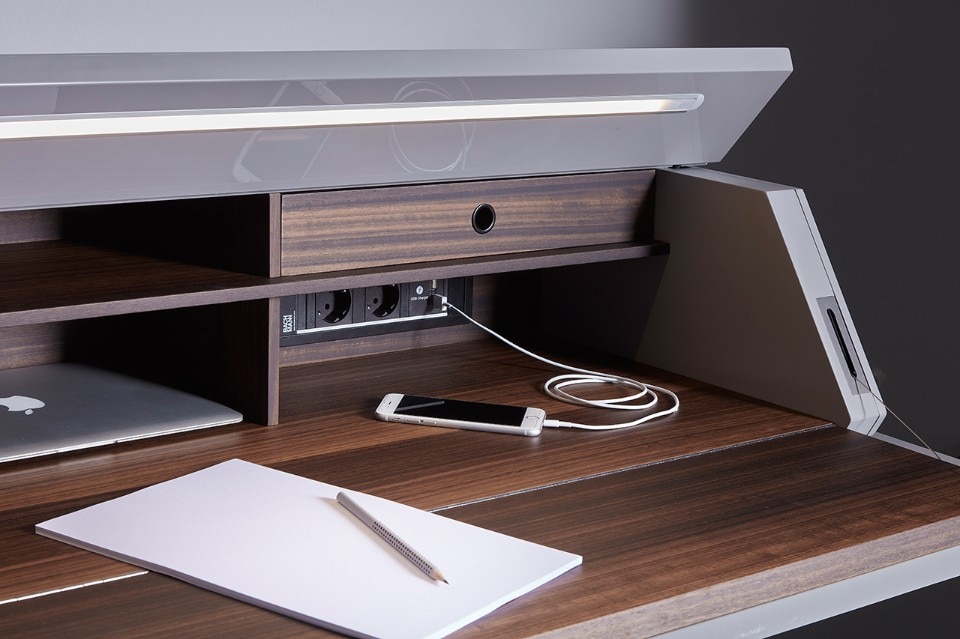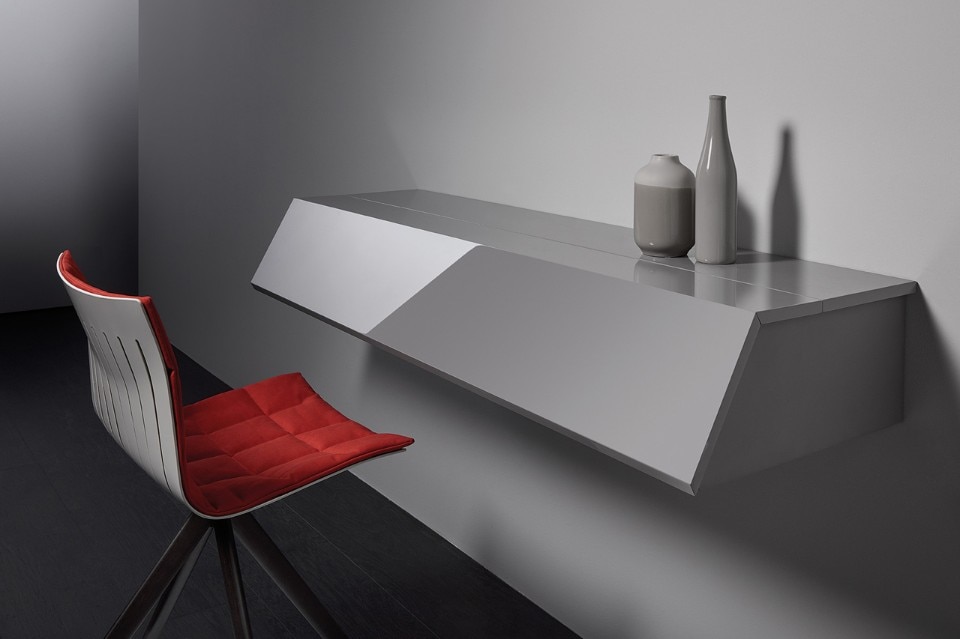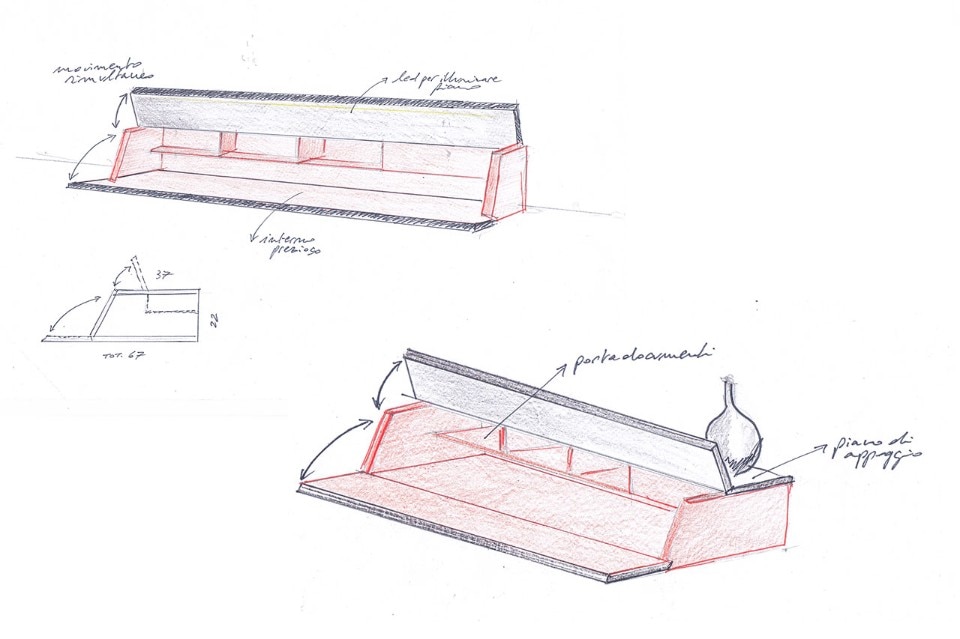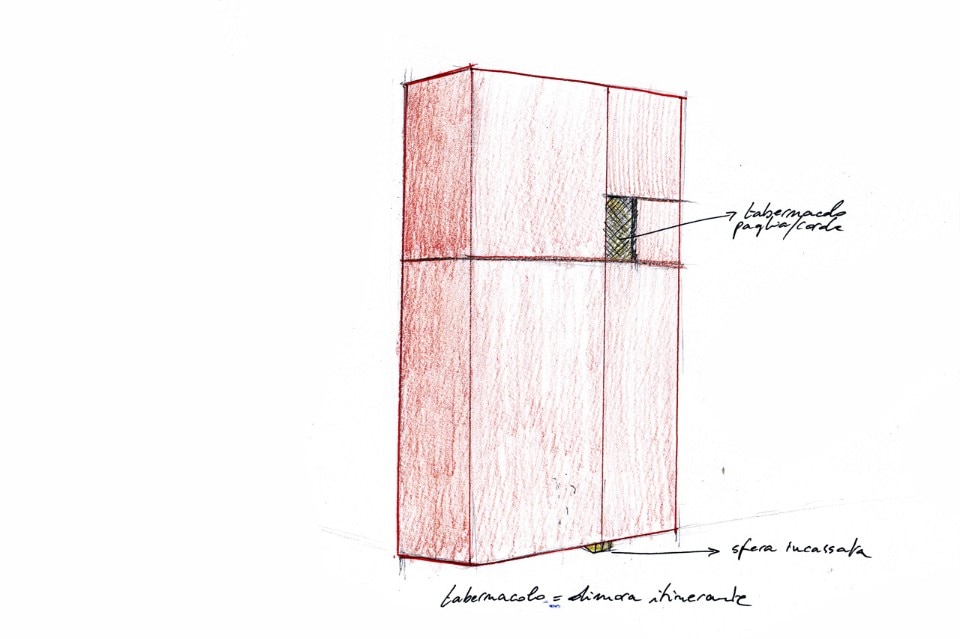Marco Petroni: Giacomo, let’s start with the Vapore collection presented by Luisa Delle Piane. It is an ensemble of furniture pieces made using the technique of steam-bending hardwood. Could you describe it?
Giacomo Moor: The Vapore collection started because I was interested in investigating an old, complex and increasingly rare technique. From the outset, my aim was to create a contemporary language by using very narrow radii of curvature – in contrast to the accentuated curves of historical pieces made using this technique. This aesthetic need has accentuated a physical property of the wood: the tendency to extend and return to the original shape once it has come out the mould, following a sort of memory of the shape. The limit of the material worked has inspired the creation of landscapes, where a continuous line of curved beech is imprisoned by glass planes and blocks of wood, creating a structure in tension in which all the elements are functional and interlinked. The relationship between the curved wood and the glass, between the natural and the artificial, is emphasised by the use of a technique of hand-silvering the glass, which enhances the perception of the style of the project and evokes the mist of steam.
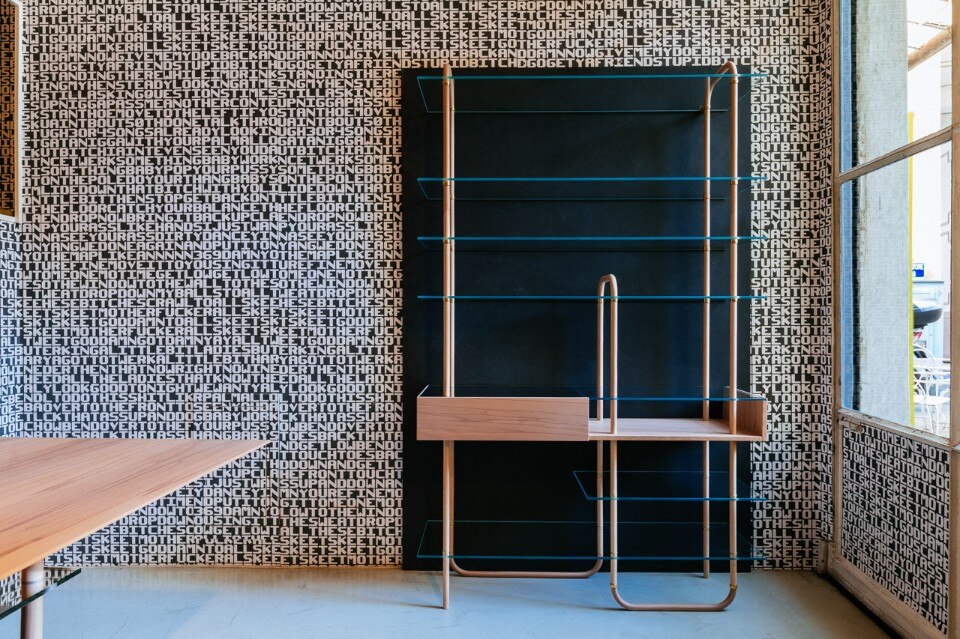
Marco Petroni: This year at the Design Week you have presented other new projects. They all have what is now a recognisable signature of yours: technical ability, a knowledge of materials and strong aesthetic development. How did this new work come about?
Giacomo Moor: One of the new projects is Dimora, which was commissioned by Wallpaper for the “Handmade” collective (and realised by Emmemobili). The exhibition sees designers and companies working together on a single theme, which changes from time to time, to create a one-off piece. I was asked to design a tabernacle cabinet. The goal was to create a more transversal object. We aimed to retain its function and above all its meaning, while transforming it into an example of domestic micro-architecture with multiple functions, adaptable to whoever is living with it. The etymology of the word was important: the Latin words tabernaculum and taberna derive from tabula, a wooden table, and mean hut, a temporary dwelling marking out a private, intimate space housing one's own spirituality, or – in the absence of that – providing a personal space. The third project is Ghostwriter, which strengthens the collaboration with Acerbis begun in 2016. It is a mysterious object which, thanks to its sophisticated system of openings, reveals itself to be a writing desk with accessories designed to bring the office into the home. The mechanism, which was designed specifically for the product, clearly highlights the added value that a company's know-how can bring to a project.
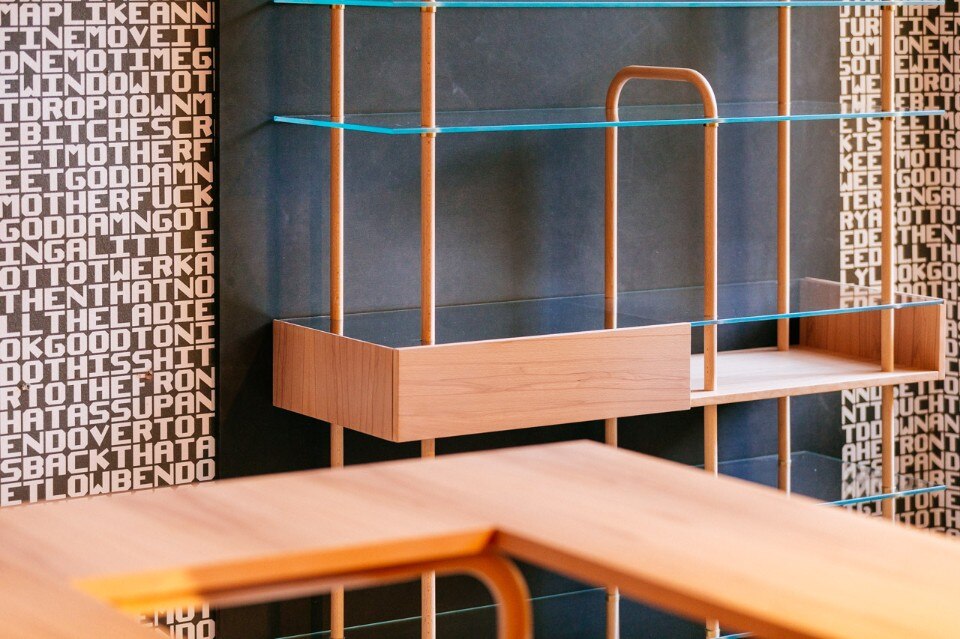
Marco Petroni: When did your rapport with wood start, and what does it mean to start from this material and then hybridise it?
Giacomo Moor: My passion for wood started during my school years, when I started working in a Milan workshop. Then when I met my thesis supervisor, Beppe Finessi, it was decisive in convincing me to try this work, the combination of craftsmanship and design. Hardwood continues to enthral me each time I work with it. The process of transformation it undergoes from log to finished product is uniquely moving.
Marco Petroni: Your business is somewhat unique in the design world. Where do you find the time to put together ideas and projects, and to manage your company?
Giacomo Moor: I am learning to prioritise organisation over everything else. I see it as the basis for developing a business such as mine. The first hours of the day are fundamental in this sense. Being able to surround yourself with enthusiastic and able people is another factor. As well as improving the quality of work, of course, it helps to lighten the load. I don't believe that the ideas or the key to the interpretation of a project arrive instantaneously or as a flash of inspiration. They are the result of many ingredients and notions. They accumulate, even unconsciously, during the work every day and sometimes I manage to translate them into something interesting.
Marco Petroni: In a telling phrase, Richard Sennett calls himself "a philosophically minded writer asking questions about such matters as woodworking, military drills, or solar panels". Would you say something similar about yourself? What stimulates you to reflect on your profession?
Giacomo Moor: My partner in life and work, Aurelie, graduated in philosophy and at the start of each project she repeats to me, almost like a mantra, “We have to create a story.” We always try to find a meaning and a logic to everything we do, even when we’re acting impulsively or when we're doing something that’s apparently simple. Perhaps it is exactly this quest for a logical thread that leads me, in many cases, to extend a single object into a family or collection, which reinforces or further justifies the narrative.
Marco Petroni: You work for a host of different clients. What are the differences between working on, for example, a project developed for a company and one for a gallery?
Giacomo Moor: I divide my time between three sectors. The first I call “Limited” – these are projects for galleries or museums, or one-off pieces more generally. The second is “Industrial”, products for companies, and the third is “Bespoke,” projects for private clients. Developing a product for a company means that you have to take account of many different factors and restrictions. The brief is precise and is set by the client. It’s my belief that in a good collaboration between company and designer, synergy and continual engagement on the evolution of the product are key. A collection for a gallery is the product of personal work, which may have been carried out over a number of years. In this case, I almost always take care of the production too. Since the run is more limited, it is manageable within my set-up. I always take the opportunity on these occasions to learn new techniques or working methods that I didn’t know. Experimentation is fundamental here.
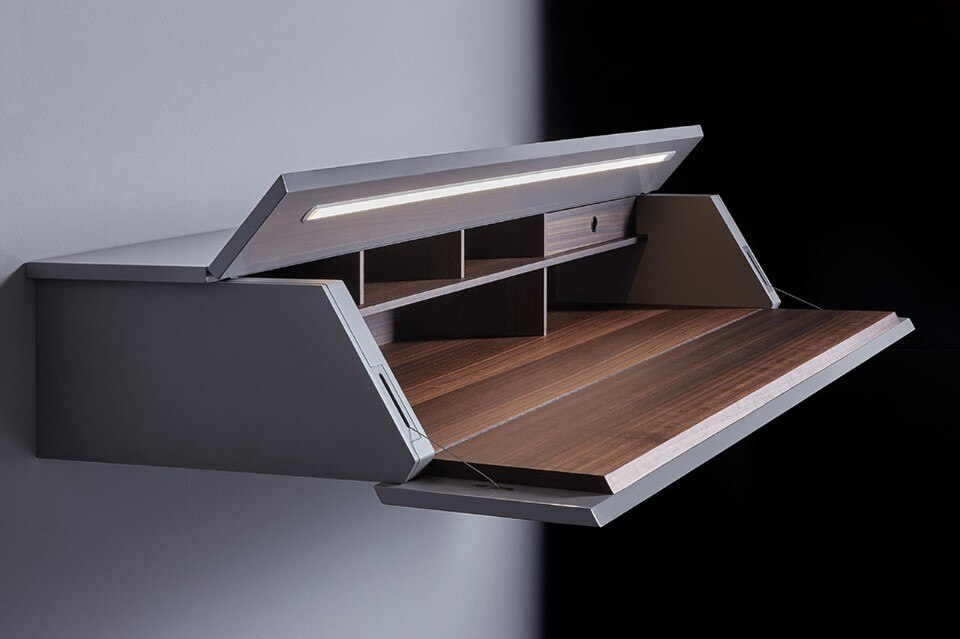
Marco Petroni: Do you have a particular fondness for any of your projects? Are there designers you follow or figures whose work you particularly appreciate?
Giacomo Moor: There are projects that express a specific moment more than others, but I always prefer to hope that my next work will be better than the one I have just completed. I am fascinated by figures who are very dissimilar in terms of their approach to design, such as Grcic, the emblematic industrial designer, Paolo Ulian, Formafantasma, and Ron Gilad. They have succeeded more than others in bringing a personal journey into their work.
Marco Petroni: In your production and creative organisation, you will have to entrust important parts of your everyday work to others. How do you choose your collaborators, how many of them are there, and what method do you use to organise your group’s work?
Giacomo Moor: There are 11 of us in total, myself included, and we are divided equally between the two areas of design and production. I have a head of production who supervises the guys in the carpentry workshop, and another overseeing the “bespoke” work and the other two areas – Industrial and Limited. Then there’s Aurelie and me. As I touched on before, I think that the ability to trust people and delegate is very important, so choosing the right partners is fundamental.
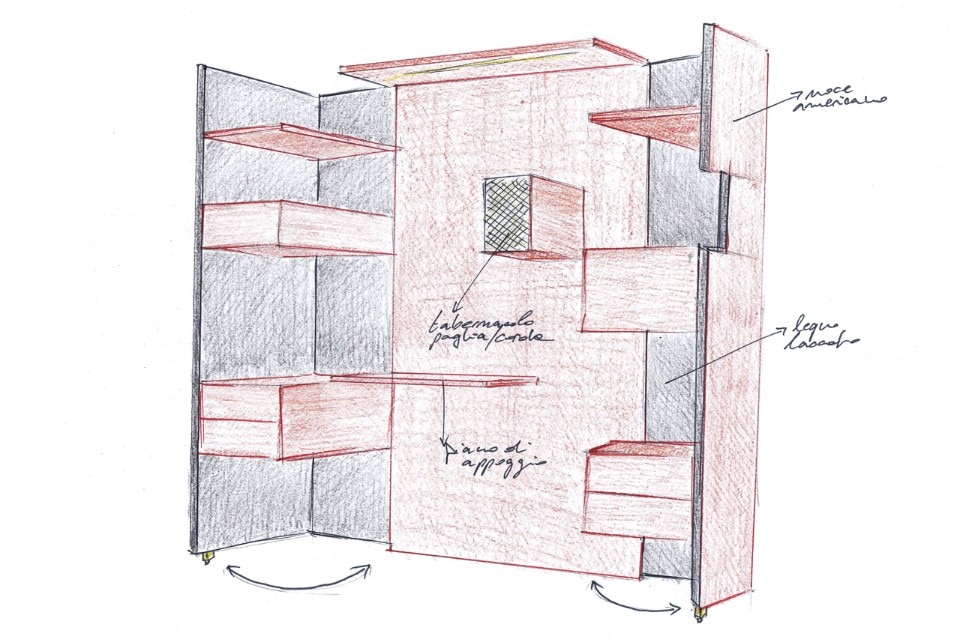
Marco Petroni: How do you see the current situation of design in Italy and more widely?
Giacomo Moor: We are going through a period of adjustment and seeing new logics and new perspectives. The revival of artisan outfits and self-producing designers has changed the old division, which had design brands on one side and producers, artisans and contractors on the other. There are many of us designers and the companies no longer offer a guarantee of a stable, continuous income. The world of art and design allows for experimentation and supports criticism and research, the wellsprings of the development of the sector and its continual improvement. But I believe that design is and must remain a response to the needs of the market, so my preference is for experimentation to find a place again within companies. It should not be restricted to the short run and self-production circuit.
Marco Petroni: What about future projects?
Giacomo Moor: I’m designing a new collection with an unusual type of wood, I’m pursuing a project in which I will apply a craft technique to semi-industrial production, and I've also launched new collaborations with companies in the sector.
3–9 April 2017
Giacomo Moor
Vapore
Galleria Luisa Delle Piane, via Giuseppe Giusti 24, Milan
Ghostwriter – Acerbis International
Fiera Rho-Pero
Dimora – Wallpaper, Emmemobili
Mediateca Santa Teresa, via Moscova 28, Milan


